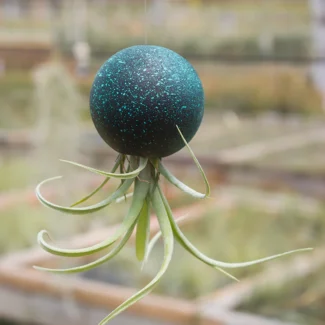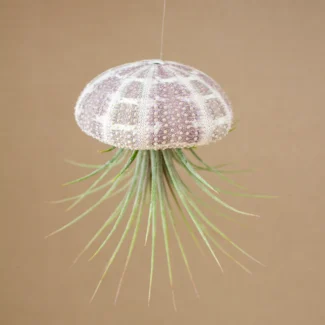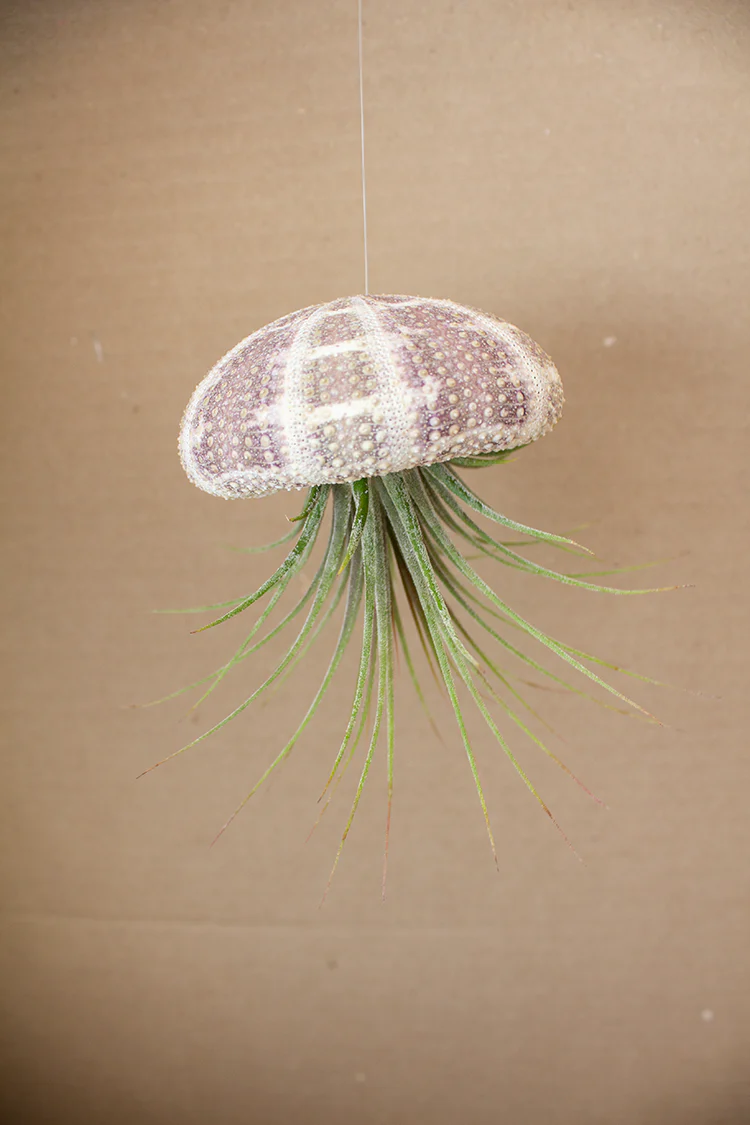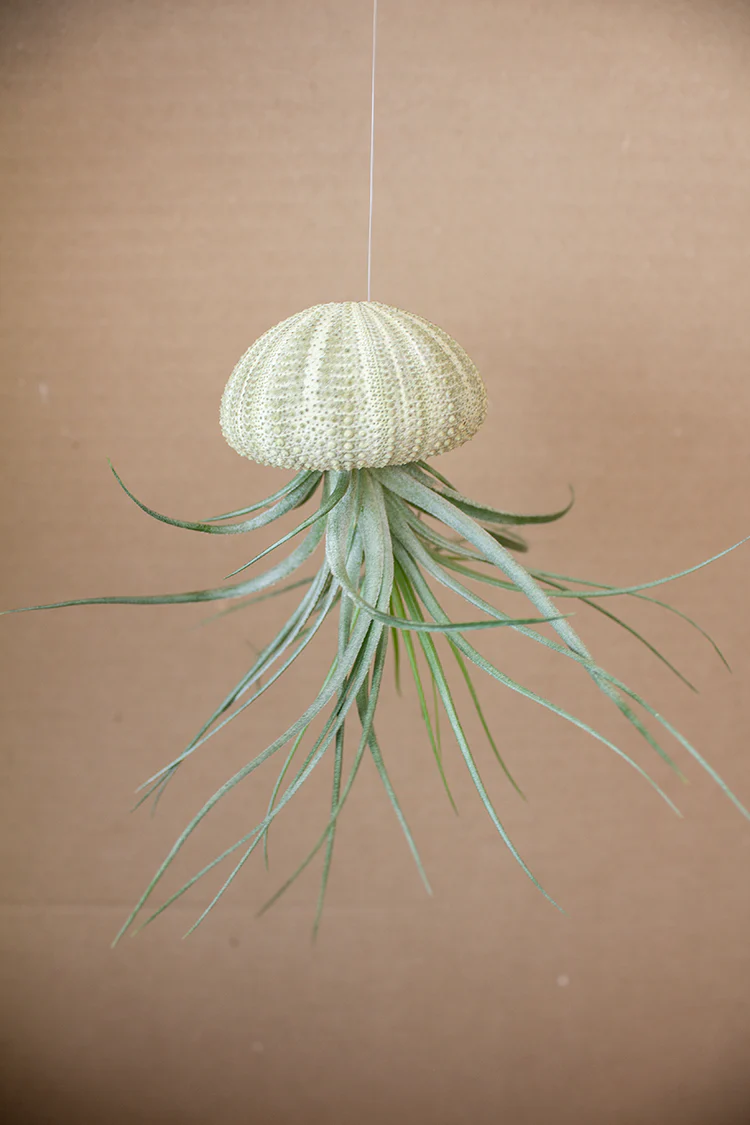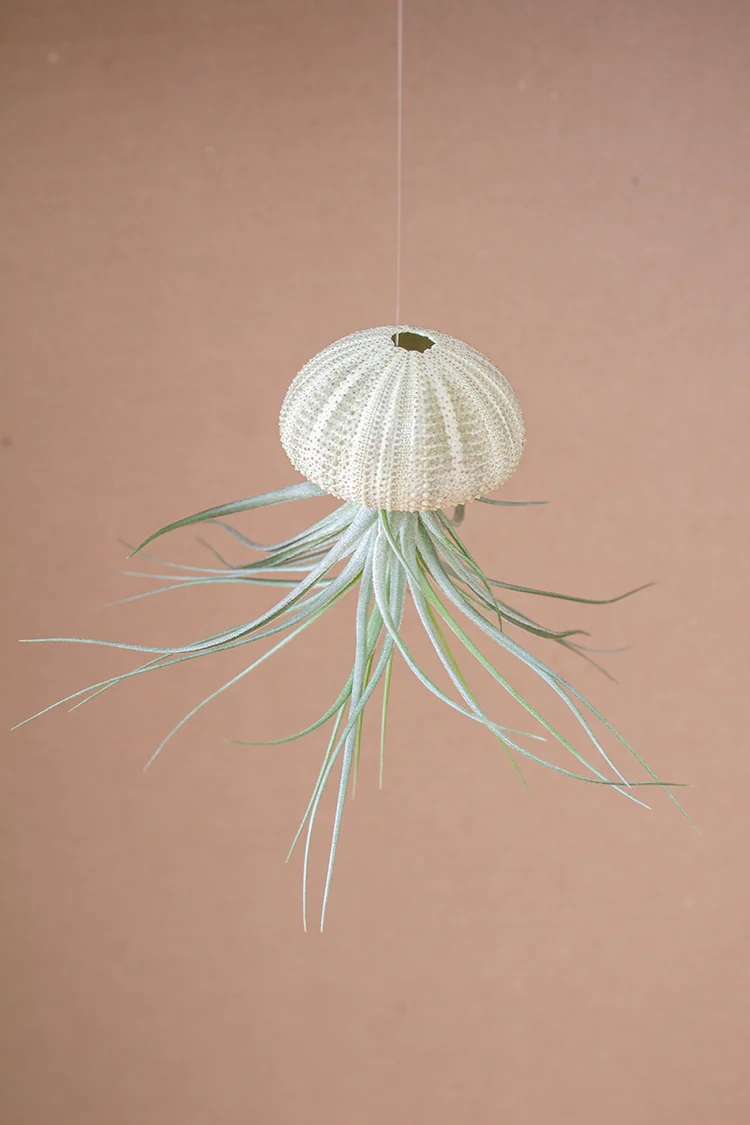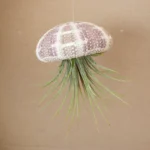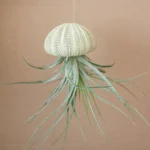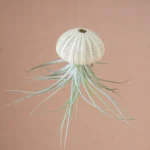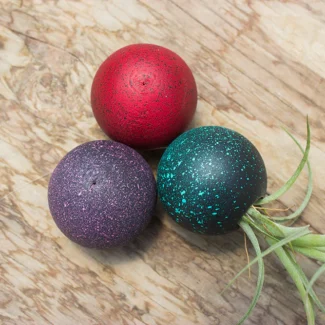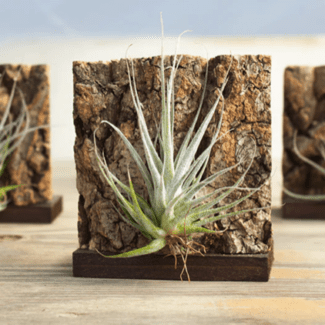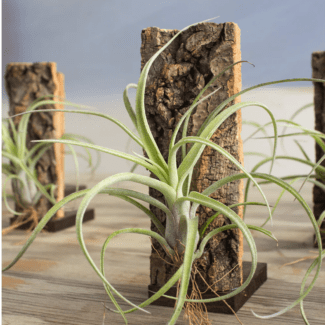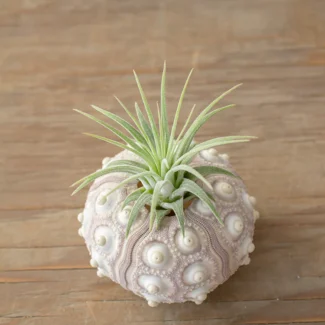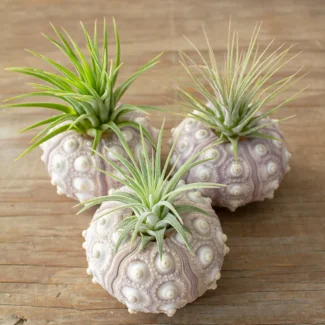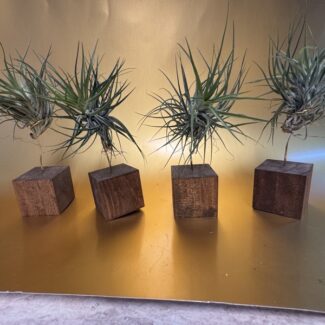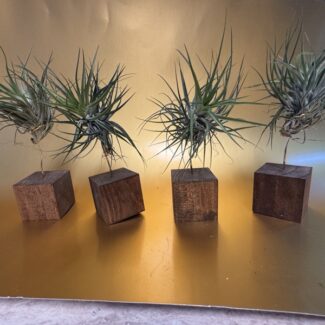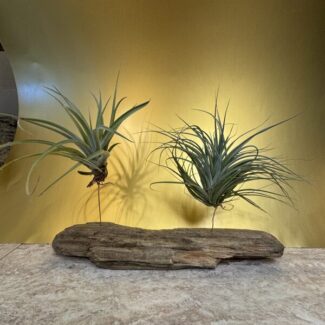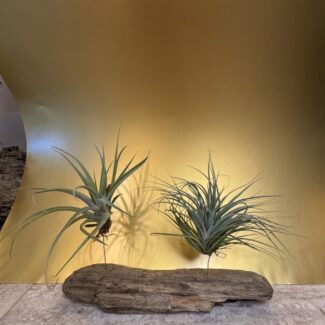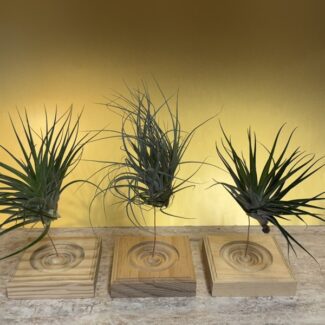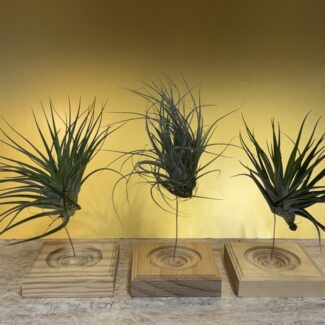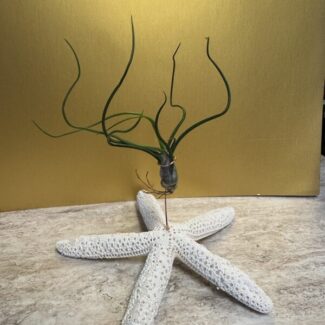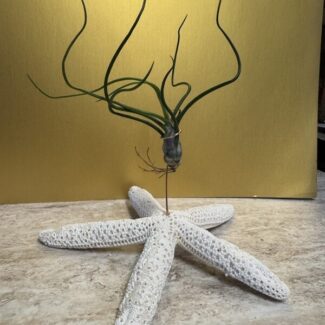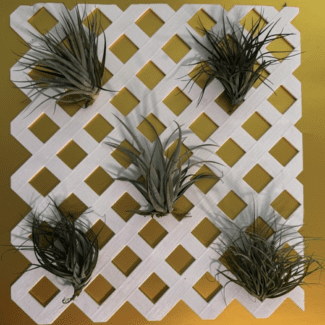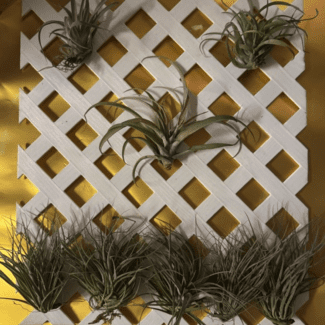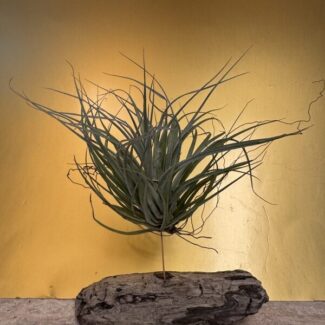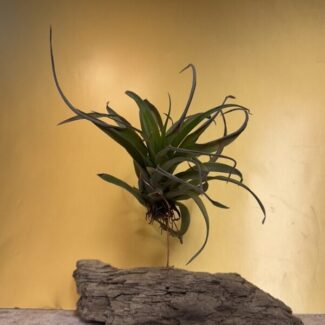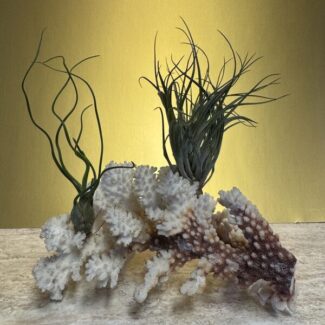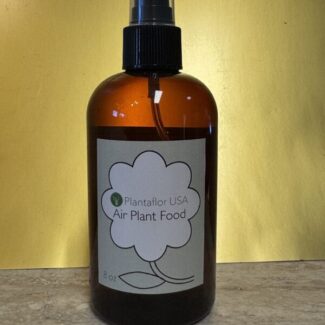These green sea urchin kits are meant to resemble jellyfish. They may require a bit more water because they dry out quicker. Airplant Included.
Colors: Super Blue, Radical Red, or Stellar Pink
We highly suggest our air plant food misting bottle to keep the air plants moist.
Several benefits make them a popular choice for indoor and outdoor decor. Here are some of their key benefits:
Easy to Care For
- Low Maintenance: Air plants do not require soil and need minimal watering, making them easy to care for.
- Versatile: They can thrive in various environments, from low light to bright, indirect light.
Air Purification
- Clean Air: Air plants can help purify the air by absorbing toxins and releasing oxygen, contributing to a healthier indoor environment.
Space-Saving
- Compact Size: Their small and compact size makes them ideal for small spaces, such as apartments or offices.
- Creative Displays: They can be displayed in various ways, such as hanging terrariums, mounted on driftwood, or placed in decorative containers.
Aesthetic Appeal
- Unique Look: Air plants have a unique and exotic appearance, adding a touch of natural beauty to any space.
- Variety: There are many different species of air plants, each with its distinctive shape and color.
Stress Relief
- Calming Effect: Having plants around can reduce stress and promote well-being.
- Natural Decor: Incorporating air plants into your decor can create a calming and relaxing atmosphere.
Educational Value
- Learning Opportunity: Air plants provide a great way to learn about plant biology, air purification, and the natural world.
Versatile Uses
- Gift Options: They make excellent gifts for plant enthusiasts and can be used in various DIY projects.
- Event Decor: Air plants can be used at weddings, parties, and other events to add a touch of natural elegance.
Growth Process:
- Absorbing Nutrients:
- No Soil Needed: Unlike most plants, air plants don’t need soil to grow. They absorb water and nutrients through their leaves.
- Trichomes: Their leaves have specialized cells called trichomes that help them absorb moisture and nutrients from the air.
- New Leaves:
- Rosette Shape: The plant grows in a rosette shape, with new leaves emerging from the center.
- Leaf Growth: New leaves are often lighter in color and gradually darken as they mature.
- Producing Offsets (Pups):
- Pups: After flowering, the plant will produce offsets or “pups” at its base.
- Pup Growth: These pups will grow into new plants. You can leave them attached to the parent plant or separate them once they reach about 1/3 the size of the parent plant.
- Mature Plants:
- Cycle Continues: Each pup will grow into a mature plant, continue to absorb nutrients, produce new leaves, and eventually flower and create more pups.
Care to Support Growth:
- Light: Provide bright, indirect light to support healthy growth.
- Watering: Use our air plant misting plant food to ensure the plant has enough moisture.
- Air Circulation: Good airflow helps prevent mold and supports healthy growth.
- Fertilizing: Use a bromeliad or epiphyte fertilizer every other month to boost growth and flowering.
With proper care, your Tillandsia Capitata Guzmanoides will thrive and continue its beautiful growth cycle.
Care instructions for your Stricata Midnight air plant:
Light
- Bright, Indirect Light: Place your air plant near a window with plenty of bright, filtered light. If natural light is insufficient, you can use artificial grow lights.
- Avoid Direct Sunlight: While it can tolerate some direct sunlight, especially in the morning or late afternoon, avoid intense midday sun to prevent scorching the leaves.
Water
- Misting:
- In between soakings, mist your air plant 2-3 times a week, especially if your home has dry air
- Make sure to mist all sides of the plant to ensure even hydration.
- Recommend using our air plant misting bottle spray
- Humidity: Air plants thrive in humid environments. If your home is dry, consider using a humidifier or placing the plant on a tray with water and pebbles (the plant should not touch the water directly).
Temperature
- Warm Environment: Keep your air plant in a warm environment, ideally between 50-90°F (10-32°C). Avoid exposing it to temperatures below 35°F (1.6°C) for extended periods, as cold temperatures can damage the plant.
Fertilizer
- Bromeliad or Epiphyte Fertilizer:
- Use a bromeliad or epiphyte fertilizer diluted to about 1/4 of the recommended strength.
- Fertilize the air plant every other month by adding the diluted fertilizer to the soaking water.
Air Circulation
- Good Airflow: Ensure your air plant has good air circulation to prevent mold and mildew. Avoid placing it in enclosed spaces. If kept in a terrarium or display case, ensure there are openings for airflow.
Seasonal Adjustments
- Winter Care: During colder months, you might need to bring the air plant indoors or provide extra protection if it’s kept outside. Be mindful of heating sources, as dry indoor heat can affect humidity levels.

